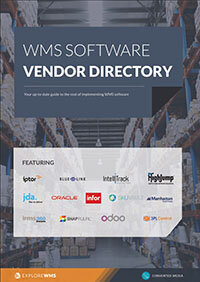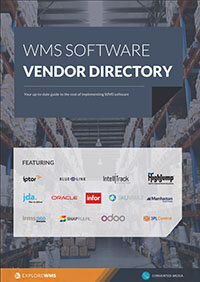Six features to look for in a retail WMS
Few industries are as complex as retail. You need to have the right inventory on hand to meet what your customers want without running out. Plus, you need to manage delivery of those goods across a wide range of channels and locations, which means fulfillment from a variety of sources.
And, all of that needs to somehow come together within your software systems. A strong warehouse management platform can make all this easier; a poor WMS can make it all a great headache. Here’s how to avoid needing the aspirin.
1. Simple fulfillment from multiple locations
Retailers often deal with multiple distribution centers and warehouses service a variety of distribution channels, stores, web platforms, and more. Each channel and routing is essentially a different feature within a WMS, making seamless integration a must. Add in last-mile fulfillment partners and you’ll be in decent shape to reach all your partners and customers with whatever goods they need.
2. Robust real-time inventory tools
Knowing what you can sell right now requires knowing what you have. Retailers require a real-time view of inventory across all their warehouse locations in order to properly take and fill orders.
Smarter inventory management also means the ability to adapt to consumer orders, which tend to be small but unique. Your WMS needs the ability to enable picking of mixed SKUs in as a few passes as possible to give you the best return over time.
Find retail WMS to suit your company using this comprehensive WMS vendor directory
Plus, if you have to source an order from multiple warehouses, a good retail WMS can save you considerable time and money by automating that process in real time, instead of causing staff to look, call, report, and update numbers manually.
3. Deep data reporting and analytics
Retail is a fickle business and sometimes you need to dump inventory while other times you’ll need to dramatically shift your replenishment.
Data and valid predictive analytics make it somewhat easier to generate forecasts and leverage those forecasts across your commerce channels. You’ll be empowered to reach across your supply chain and share information as well as needs once you realize them.
Demand planning and rapid response to it will allow you to run a leaner operation while still meeting what customers want. Decrease your inventory costs and requirements while improving in-stock availability for popular items by tracking and reporting all of the data you have.
4. Integration with multiple marketplaces
The future of retail is complicated. Larger big box retailers are pursuing sales on large e-commerce platforms that they do not control. There are even rumors that Facebook’s local sales communities will expand to retailers and e-commerce partners.
How much additional time will you need to spend if your Amazon orders are handled differently than your website orders or your brick-and-mortar fulfillment?
Retail WMS now needs to be, at least in part, an e-commerce WMS. No one is quite sure what next year will bring, so your WMS needs to be flexible and prepared.
5. Integration with your internal software
If your point-of-sale system isn’t talking to your WMS, then you’ve got a manual process that’s generating significant potential for human error. The same goes with your enterprise resource planning tools, your systems for communicating with manufacturers, and the platforms you use to set up shipping lanes and modes.
Create an existing vendor list and use this as a guide for what integrations you need in a WMS.
6. Support for advanced features you require
Consider what is unique to your business.
You may need client-wise segregation of some inventory for more reliable fulfillment. Or, you might use a series of warehouses to pre-stage goods as you get ready for the next fashion season. Perhaps your next big in-store promotion will perishable, so your warehouses now need to operate at certain temperatures and support reefer trucks. Or, your workforce is moving to mobiles and you need a fully-functional app.
Every retailer has a slightly different offer and reacts to trends in a different way. There’s no reason you should consider a WMS that does not meet your specific needs.
Free white paper

WMS vendor directory
Save hours of WMS vendor research with this free guide

Featured white papers
-

WMS requirements template
Over 120 WMS feature ideas to help you build a requirements list and shortlist vendors
Download
Related articles
-

Your complete WMS features and requirements guide
How to gather requirements for a new WMS, and features to look for to meet them
-

Mission-critical features of food lot traceability software
What features of food traceability software will help you during a food recall
-

Here's your complete WMS modules and features checklist
All the features and modules you might need in your WMS - perfect for requirements gathering

